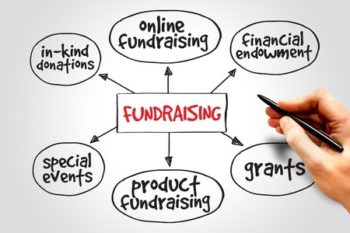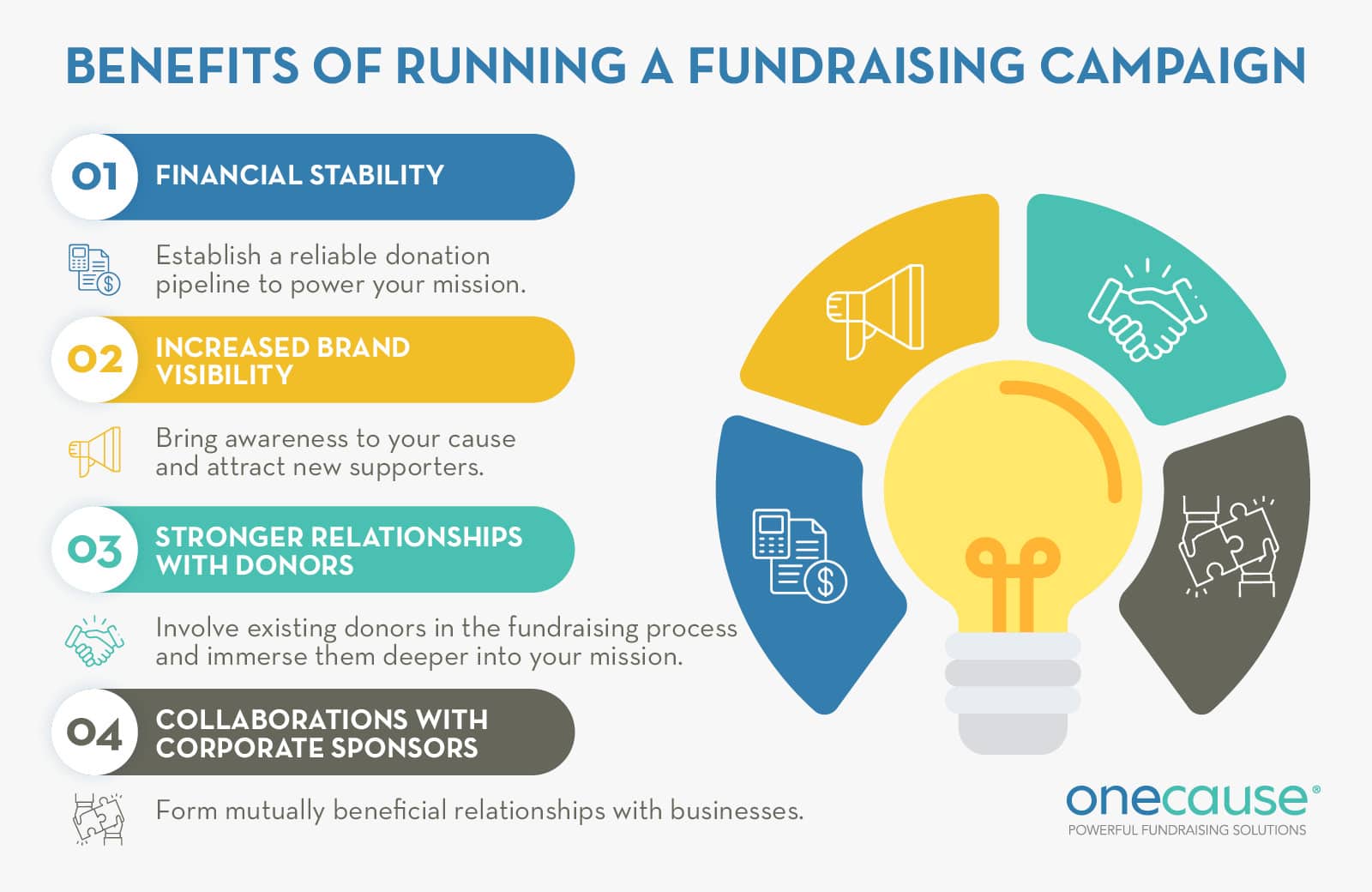The Duty of Area Involvement in Nonprofit Fundraising: Building Lasting Relationships for Sustainable Assistance
Area involvement is progressively recognized as a vital component of successful not-for-profit fundraising. By cultivating genuine partnerships with regional stakeholders, organizations can grow count on and commitment, which are essential for sustainable assistance. Nevertheless, the techniques and methods used to engage communities vary extensively, raising vital concerns about performance and impact. What are the most effective techniques for growing these vital links, and how can nonprofits determine their success in this field? Comprehending these characteristics might considerably affect the future of fundraising efforts and the total mission of not-for-profit organizations.
Recognizing Community Engagement
Community interaction is a vital component of successful nonprofit fundraising initiatives. It refers to the strategies and activities that organizations utilize to attach with their neighborhood areas, cultivating relationships that are mutually useful. Understanding community engagement includes acknowledging its diverse nature, which includes outreach, engagement, and cooperation. Nonprofits should determine essential stakeholders-- such as community members, regional businesses, and various other companies-- to create effective engagement strategies.
Efficient community involvement is based on active listening and responsiveness to the needs and passions of the community. This procedure includes obtaining comments, comprehending neighborhood dynamics, and making sure that the organization's goal straightens with regional priorities. Involving the area can take various kinds, including public meetings, volunteer possibilities, and partnership campaigns, each developed to urge participation and investment in the company's objectives.
Additionally, community involvement should be approached as a recurring dialogue instead of an one-time initiative. By fostering a comprehensive setting where community voices are heard and valued, nonprofits can construct a strong structure for future fundraising undertakings. Inevitably, a deep understanding of area engagement equips organizations to produce genuine links that improve their overall efficiency and sustainability.
Benefits of Solid Relationships
Strong partnerships formed with community engagement return countless benefits for nonprofit fundraising initiatives. Primarily, these connections foster trust and credibility, important elements in encouraging contributors to contribute. When prospective fans see a nonprofit proactively associated with their community, they are most likely to believe in its objective and impact.

In addition, these connections facilitate efficient communication. Nonprofits can utilize their connections to share tales of impact, updates, and needs, guaranteeing that supporters continue to be educated and involved. This open line of communication not just strengthens bonds yet also motivates word-of-mouth promotion, increasing the nonprofit's reach.
Lastly, solid neighborhood connections can attract new partners and enrollers. Individuals and organizations are a lot more likely to align with organizations that demonstrate significant community involvement, supplying extra sources and support that can dramatically improve fundraising abilities. Therefore, cultivating robust relationships through neighborhood involvement is important to a not-for-profit's lasting fundraising company website success.
Strategies for Efficient Interaction
Just how can nonprofits properly engage their neighborhoods to enhance fundraising initiatives? Establishing targeted approaches is important for promoting significant links. First, leveraging social networks systems allows organizations to share their goal dynamically and interactively, reaching a wider audience. Regular updates, involving content, and calls-to-action can galvanize neighborhood rate of interest and engagement.
2nd, organizing neighborhood occasions, such as workshops, volunteer opportunities, or fundraising drives, promotes face-to-face interaction, enabling nonprofits to display their influence and initiatives. These occasions not just increase funds yet also grow relationships and allow area participants to engage straight with the reason.
Third, carrying out tailored interaction strategies can enhance engagement. Customizing messages to details benefactor sectors based upon interests and previous payments promotes a sense of belonging and investment in the organization's goal.
Lastly, developing partnerships with regional services and area leaders can enhance outreach initiatives. Collective efforts can boost visibility and credibility, showing a collective dedication to the neighborhood's health. By incorporating these techniques, nonprofits can construct enduring relationships that improve fundraising efforts and drive lasting assistance.
Measuring Engagement Success
While engaging the neighborhood is critical for successful not-for-profit fundraising, determining the performance of these involvement efforts is similarly essential. Establishing clear go now metrics enables organizations to analyze how well they are linking with their audience and attaining their fundraising objectives. Secret performance indicators (KPIs) such as contributor retention prices, volunteer engagement degrees, and engagement on social media platforms give concrete data for evaluation.

Consistently evaluating these metrics enables organizations to pivot their strategies when required, making certain that area engagement stays lined up with their total mission. Furthermore, sharing these outcomes with stakeholders fosters openness and develops depend on, encouraging more community involvement. Eventually, a durable dimension structure not only notifies future fundraising efforts but also reinforces the partnership in between the not-for-profit and its fans, preparing for sustainable success.
Study in Area Impact
Many instance researches highlight the extensive influence that community involvement can have on nonprofit fundraising success. One notable instance is the "Something to chew on" effort, where a regional food financial institution partnered with institutions and organizations to host community suppers. These events not only elevated funds yet also cultivated a feeling of belonging amongst individuals, considerably boosting benefactor retention rates.
Another compelling instance is the "Eco-friendly Spaces Task," which involved neighborhood homeowners in the revitalization of metropolitan parks. This initiative not just gathered financial backing from neighborhood services yet additionally cultivated a volunteer base that added to continuous maintenance and programming. The sense of ownership and pride among neighborhood members translated into sustained contributions.
In the world of check this site out arts, the "Art for All" campaign efficiently involved regional musicians and patrons to produce collective art installments, causing raised presence and contributions for a neighborhood arts not-for-profit.
These instances highlight that when nonprofits focus on community participation, they can produce long-term connections that improve fundraising efforts, ensuring lasting assistance and fostering a dynamic neighborhood society. Such cases show that area involvement is not simply a technique but a vital column of nonprofit success.
Conclusion
In final thought, area interaction is integral to the success of not-for-profit fundraising initiatives. Ultimately, a durable structure of community assistance not only magnifies fundraising possible but likewise grows a culture of partnership, crucial for achieving long-lasting business objectives and sustaining meaningful effect. fundraising consultant.
Nonprofits need to identify key stakeholders-- such as neighborhood members, regional businesses, and other companies-- to produce reliable involvement strategies.

In verdict, neighborhood interaction is integral to the success of not-for-profit fundraising efforts.